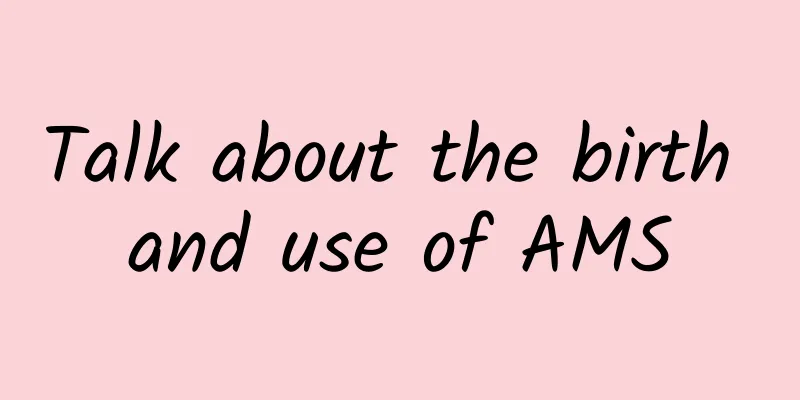Is it reliable to use 8 clams to test the quality of drinking water in the entire city?

|
Who would have thought that whether people can drink clean and non-toxic water depends on clam civil servants! Clam Bells|Fat Kathy In Warsaw, the capital of Poland, people's daily lives mainly rely on surface water from the Vistula River. In the middle of the river, scientists at the Debicz Water Treatment Plant constantly monitor water quality to ensure that residents get drinking water without contamination. And one of the early warning systems used by scientists is these mysophobic clams. Pumps upstream on the Vistula River provide millions of litres of water to the Polish capital | Fat Kathy Mysophobic Clams Like most aquatic animals, clams depend on the quality of the water in which they live for their survival. When the water is relatively clean, they happily open their shells to let the water flow through them . The water in the natural environment contains many tiny food particles, and when the water flows through the clam shells, the cilia on the clam's gills capture these food particles and transport them to the clam's mouth [1]. When the water is relatively clean, clams open their mouths to feed from the current|worldanimalfoundation.org When the water is not clean, harmful substances in the water will harm the clams . Therefore, they will choose to activate their own defense mechanism, close their shells, and reduce the flow of water . However, when the clams close their shells, they cannot eat, and if this continues for a long time, they may starve to death[2]. This "cleanliness obsession" allows the clams to realize their ambitions in the plan to protect the Polish people's water use. Catching clams as a "civil servant" Not all clams can detect water quality. Only clams living in particularly clean lakes or reservoirs can serve as guardians of water quality. After scientists capture clams in clean waters, they bring them back to the lab. The clams have a two-week adaptation period in their new environment. During this time, scientists calibrate the clams to ensure they can accurately detect water quality [3]. During this process, the clams live in very clean water, and scientists observe how they naturally open and close their shells. Once the water quality deteriorates, they quickly close their shells[4]. Clams live at the Gruba Kaśka (Fat Kathy) pumping station | Fat Kathy If a clam passes the calibration, the scientists glue a coil of wire with a magnet to its shell using a special clam-safe glue and place it in an aquarium, which also contains magnetic field sensors that detect when the clam's shell opens and closes. Gluing Coils to Clams | Fat Kathy A water quality testing team consisting of 8 clams Clams also need teamwork. If six of the eight clams in the aquarium keep their shells closed at the same time for more than four minutes, they will sound the alarm at the water plant and cut off the water supply . However, these clams cannot tell us what exactly contaminated the water. Therefore, when the alarm is received and the water supply is stopped, scientists at the water plant will quickly conduct experiments to detect water contamination[3]. Clam Civil Servants|Fat Kathy After the clams finish working, will they become stir-fried clams... No! To ensure that the clams are not overworked, after three months they are released back into the waters where they came from , where they continue to live in the wild. When they are released, scientists also mark their shells to prevent them from being reused .[4] However, people’s water safety does not rely solely on these clams. Like other water plants in the 21st century, the Debitz Water Treatment Plant also has other high-tech and sophisticated water quality detection and early warning systems . The clams in service are just an extra layer of insurance for people’s water safety[3]. Working creatures that monitor the environment Clams aren't the only organisms that can help us monitor our environment; many animals, plants, and even bacteria have contributed to this field. Canary in the Mine Before electronic carbon monoxide detectors were widely used in coal mine exploration, canaries were helping to keep miners safe. Carbon monoxide is colorless and odorless, and can quickly replace oxygen and bind to hemoglobin, causing hypoxia and even death. Compared to humans, canaries are much more sensitive to carbon monoxide . Therefore, in the 20th century, many British miners would bring canaries with them when they went down the mines to explore. If the birds behaved abnormally, they would immediately retreat and successfully save themselves before they lost their ability to move .[5] Canaries for detecting carbon monoxide | forbes.com Plants that detect pollutants Professors at Kobe University in Japan have developed a magical plant to detect organic pollutants that can contaminate soil and water . Dioxins are a type of highly toxic pollutant that is well known to everyone. They can damage the immune system, interfere with hormones, and cause reproductive and developmental problems. Certain dioxin-like polychlorinated biphenyls (PCBs) have similar toxicity and are also classified as "dioxins." Professors have cloned the receptor genes of animals into plants. If plants live in an environment with PCBs, they will show visible morphological changes [6], such as albinism or structural abnormalities such as shortened roots. This detection method is more convenient and cheaper than collecting soil samples to detect pollutants. Genetically modified plants show changes in growth morphology when detecting organic pollutants | Reference [6] Bacteria for water quality testing Scientists at the Shenzhen Institute of Occupational Disease Prevention and Treatment have discovered that bacteria modified by bioengineering technology will turn blue-purple when they encounter divalent cadmium (Cd(II), which is harmful to humans . By simply looking at it, it is possible to effectively detect whether the cadmium content in water exceeds the standard[7]. There are many animals, plants and even microorganisms that "work" for environmental monitoring. In addition to thanking these natural lives, we should also try to reduce the negative impact on the environment. Without so much pollution, there would be no need for clams to work! References [1]What do clams eat? http://shellfish.ifas.ufl.edu/clams_eat/home.php#:~:text=Filter%20feeding%20is%20accomplished%20by,be%20digested%20by%20the%20animal. [2]Fat Kathy (2019). https://www.imdb.com/title/tt15563054/ available at https://vimeo.com/339428901 [3]Is Poland's tap water really protected by clams? At https://www.youtube.com/watch?v=i0RkEs3Xwf0 [4]Someone Explains How Poland Uses Clams To Control Its Water Supply And It's Pretty Crazy. https://www.boredpanda.com/clams-measure-water-quality-poland-fat-kathy/?utm_source=google&utm_medium=organic&utm_campaign=organic [5]The Canary In The Coal Mine Isn't Ancient History. https://www.forbes.com/sites/kionasmith/2019/12/31/the-canary-in-the-coal-mine-isnt-ancient-history/?sh=50f8bd374393 [6]Environmental monitoring of organic pollutants using plants. https://globalplantcouncil.org/environmental-monitoring-of-organic-pollutants-using-plants/ [7]Hui, Cy., Guo, Y., Li, H. et al. Detection of environmental pollutant cadmium in water using a visual bacterial biosensor. Sci Rep 12, 6898 (2022). https://doi.org/10.1038/s41598-022-11051-9 Author:Hazel Editor: Little Towel, Mai Mai Title image source: Fat Kathy |
<<: "Healthy by eating" series | Many people miss this step before cooking
>>: Can China's Yongle Palace murals, which are as large as 1,000 square meters, be restored by AI?
Recommend
Will your job be replaced by robots?
Google has been making a series of moves in the f...
Huami AMAZFIT Sports Watch: Daily payments can be completed with just a raise of the hand, and 11 sports modes make exercise more enjoyable
The development of the times has brought about ea...
18 ways to attract traffic from WeChat private domains on Douyin
Tik Tok is currently the largest public traffic p...
Attention! Don’t post these things to your friends circle
Chinese New Year Also in the circle of friends Th...
Why is the iPhone 6 malfunctioning?
According to foreign media reports, some iPhone 6...
"Black Myth: Wukong" is a huge hit. Apart from taking advantage of the popularity, do domestic car manufacturers have any other ideas?
Sales of nearly 10 million in three days! The fil...
Gaopengquan_Self-media Blue Ocean Transport Project Course Video
Gao Pengquan’s self-media blue ocean transfer pro...
Case analysis: How does an excellent community operate?
There are many methodologies for community operat...
The "old man of longevity" in the "mud basin"? Owl: I actually have the same face as the "old man"!
In the fossil exhibition areas of many natural mu...
In addition to catching up on sleep after staying up late, you can also choose to "drink a cup of tea"
After staying up late, many people think of "...
This is how the foundation of "quantum mechanics" was born
The word atom was invented by the ancient Greeks,...
Bluetooth 4.0 BLE Development
Source code introduction: Integrate the current m...
my country's first! The "Noah's Ark" of the seed industry is here
On October 20, China's first provincial compr...
Dingxiang Doctor Competitive Product Analysis Report
The Internet can “+” everything, and medical reso...
The birth of "power-free" WiFi technology: the battery life of mobile phones is saved
Students from the School of Electrical Engineerin...









